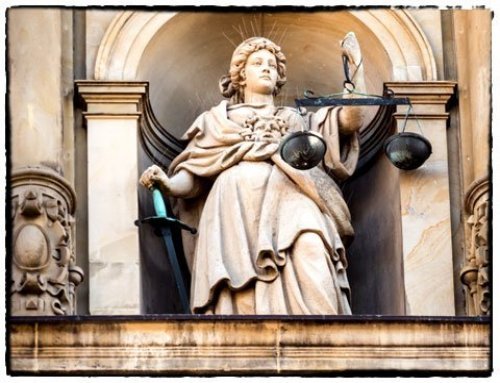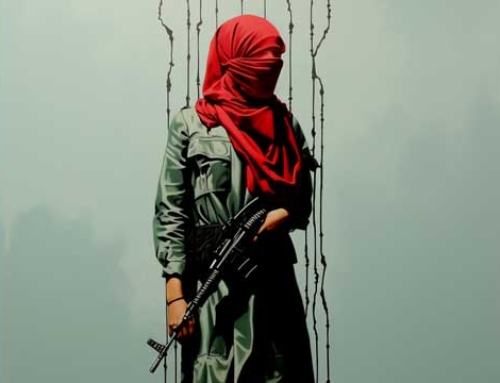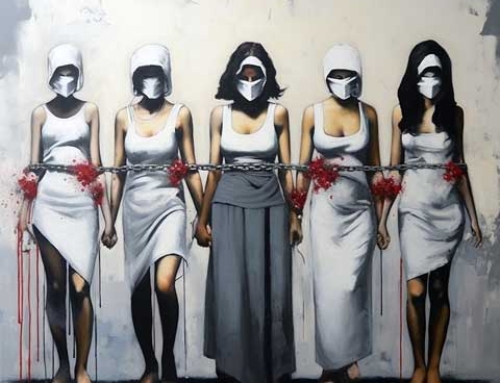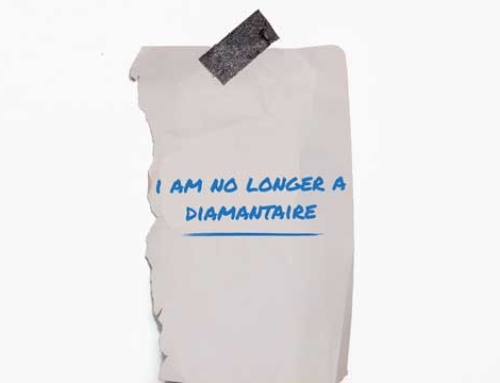A free Iran cannot emerge until the people have brought the regime to its knees.
“Woman, life, freedom“: for months demonstrators across Iran have been chanting that slogan. Since the demonstrations erupted in September 2022, more than 500 people are said to have been killed by the regime, according to human rights organisations. More than 15,000 protesters are said to have been arrested.
It was the murder of Mahsa Zhina Amini that lit the fuse in the powder keg. The twenty-two-year-old Kurdish woman died three days after her arrest in a hospital in the Iranian capital Tehran.
She was arrested by the notorious vice police, a department of the police that oversees the compulsory veiling of women in public places.
After the young woman’s murder, government officials tried to shrug off responsibility. The Iranian state released a report claiming Mahsa Zhina Amini had pre-existing conditions that had led to her death. Her family vehemently denied this, insisting that Mahsa Zhina Amini died as a result of police brutality.
Despite frantic efforts by the Iranian government to shut down internet traffic, images of the demonstrations flooded social media. Iranians, especially the young with some technical skills, manage to circumvent the blockades. That way, they manage to send images of women cutting off their hair or burning their headscarves into the airwaves.
Spread of ideology by Iran
The Iranian regime is obsessed with its image. It not only wants to stay in power, but also to spread its own ideology as widely as possible. The regime’s ambitions to “propagate its revolution” – that is, the ideological building blocks of the 1979 revolution – date back to the establishment of the Islamic Republic. They are based on delusions about the regime’s moral and political superiority.
It is precisely this image that is threatened by Iranians with dissenting opinions. The widespread internet blockades thus serve two purposes: they make things logistically difficult for the protesters and make it more difficult for them to distribute images of the demonstrations and police violence.
Ali Khamenei, Iran’s “supreme leader“, broke his silence only after the protests across the country had been going on for a fortnight. He claimed that the United States, Israel and Iranians abroad had organised the “riots“. Spreading conspiracy theories is a common strategy of the Iranian authorities.
Khamenei’s speech, moreover, also showed his support for the police and special forces violently suppressing the demonstrations. “We defend the fight against injustice” said Ebrahim Raisi, the Iranian president, at the United Nations General Assembly in New York. The hypocrisy of the Iranian regime has rarely been so visible.
History of protests in Iran
Protesting is nothing new in Iran. For decades, the Iranian people have been protesting against state violence, institutional misogyny, sexual and ethnic repression, and the arrests of activists working for political, environmental, labour and women’s rights.
Just after the 1979 revolution, women were already protesting against the compulsory wearing of the hidjab. Hardliners, as well as progressive men who considered women’s issues too trivial at the time, unleashed harsh repression.
The 1980s were a bloody time. Not only because of the war between Iran and Iraq, but also because of the large-scale executions of Iranian political prisoners.
In 1999 and 2003, students demanded sweeping social and political reforms. More demonstrations followed in 2005, including for women’s rights. And in 2007, Iranians protested against petrol rationing introduced by the government.
After the controversial re-election of Mahmoud Ahmadinejad, in 2009, the Green Movement saw the light. Protests broke out all over the country. There is still a widespread belief that the election results were fraudulent.
As with the 2022 protests, in which Mahsa Zhina Amini became the symbol of Iranian resistance, the murder of another young woman, Neda Agha-Soltan, in 2009 provoked a lot of outrage. Protesters captured her death on camera.
From the mid-2010s, protests continued in various forms. In 2014, journalist and women’s rights activist Masih Alinejad launched the My Stealthy Freedom campaign. This was against the compulsory wearing of the hidjab in Iran.
The campaign was very popular, especially among younger women. In an effort to bring women activists together on a weekly basis, an offshoot of My Stealthy Freedom was created in 2017: the White Wednesdays campaign. In it, women wore a (mostly) white headscarf every Wednesday.
Since 2017, women’s activism in Iran against the compulsory hidjab gained new momentum. Some women acted independently, others signed up to the White Wednesdays campaign and took off their veils in public spaces.
This wave of activism is also known as The Women Of Revolution Street, because the women often took off their veils in one of Tehran’s busiest locations, the Street Of Revolution.
Since then, numerous demonstrations and strikes took place in Iran. Some of these started regionally and spread across the country. Even if the protesters’ demands were initially rather site-specific, the slogans soon changed to ‘away with the dictator’.
The protests escalated and led to what was dubbed ‘Bloody November’ in late 2019 and early 2020. An estimated 1,500 Iranian protesters were killed. In January 2020, Iranian anti-aircraft missiles also mistakenly downed a Ukrainian civilian plane. All 176 occupants died. That led to more criticism and protests.
The regime then completely shut down the internet for the first time. Iranians thus became cut off not only from each other, but also from the outside world. Despite the violence of the security forces, protests continued sporadically in 2021. And after Mahsa Zhina Amini’s assassination, they would erupt in full force.
United resistance
It is noteworthy that ethnic groups in Iran, including Kurds, Baluchi and Arabs, have been fighting with the state over their political and social rights for decades. Today, these groups have united to defeat their common enemy.
And the Iranian regime? After four decades of criticism, peaceful demonstrations and resistance, its response has remained more or less unchanged.
Still it kills, arrests, tortures and silences demonstrators. The regime’s crackdown is more brutal than ever. Heavily armed police officers are clearing the streets of Iran. They open fire on unarmed protesters, while snipers shoot at people from rooftops. The internet is down and violent arrests of protesters are the norm. Even schoolchildren are targeted.
What’s different this time?
Four weeks after the demonstrations began, students at Amirkabir University scanned: “We are no longer afraid of the machine guns, tanks and cannons. Tell our mother that she no longer has a daughter.”
The slogan shows that young protesters would rather die than accept the status quo. Frustration and hopelessness have reached a boiling point. Iranians seem to realize that they should no longer count on gradual reforms. Change starts with a complete change of power in Iran.
Since the Iranian revolution in 1979, some Iranians remained sceptical about reforms. Many others genuinely hoped things would get better by voting for reformist rulers – such as Presidents Khatami (1997-2005) and Rouhani (2013-2021).
Yet even those governments did not bring about fundamental change. Human rights, the rights of women and minority groups were permanently undermined and ignored. Government after government.
The systematic repression of women, the LGBTQIA+ community, ethnic and religious groups visibly frustrates Iranians. The ongoing and appalling mismanagement of the country’s resources, the disastrous handling of the corona pandemic and the growing corruption also causes a lot of discontent.
True, international sanctions are hitting Iranians hard. Yet they are increasingly pointing to the government as primarily responsible for the general malaise. In their eyes, the government should come up with solutions to, say, the difficult economic conditions. Moreover, by making a number of catastrophic political decisions, it has itself worked the sanctions hard, many judge.
The current protests are also different because of their size and geographical spread. Mahsa Amini’s image has created unity among Iranians of all ages, genders, ethnicities and religions. Mahsa Amini has become a feminist symbol across the country, uniting people, despite their differences, for a common and revolutionary cause.
Another difference is the role of new, younger generations in the protests. Images of young girls giving the middle finger to Khamenei and Khomeini are going around the world. These girls are the best example of the ideological failure of the Iranian regime. Born after the revolution, they were taught at Iranian schools, many of which function as propaganda centres. Yet the regime has failed to mold them into docile citizens.
Finally, what also makes this new generation different is its relationship with the world. These are young digital natives, they are constantly connected to the internet and have access to global information, despite the regime’s attempts to block the internet. For earlier generations, it was different. Many millennials had to fight on several fronts: not only against regime oppression, but sometimes also against their parents.






